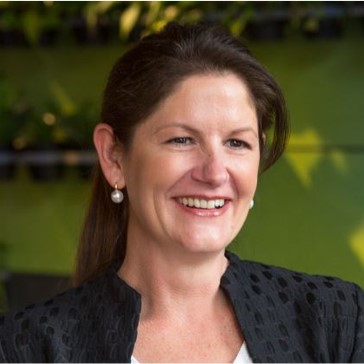How to set up a successful hybrid work model

For many of us COVID-19 has transformed how we work and our expectations for how we will work in the future. There is no going back to the standard 9-5 in the office – that is not what most people want, and that is not necessarily a bad thing.
This is not a binary office versus work from home discussion – the opportunity comes from recognising both have a place. Where, when and how we work needs to be determined by balancing individual needs with understanding the needs of our colleagues, our customers and the organisation.
Organisations now need to seize this opportunity to reset and rethink their approach to flexibility if they want to be an employer of choice in the new world of hybrid work. Because the ability to deliver on a reimagined workplace is the new battleground in the war for talent.
At Telstra, we embraced flexible working almost a decade ago – but it has taken the pandemic for us to evolve from simply working from home once or twice a week to something much broader, more profound and enduring. We are now helping our teams to work in different ways based on what works for them, whilst also thinking about where the best space is for particular types of work.

“Organisations now need to seize this opportunity to reset and rethink their approach to flexibility if they want to be an employer of choice in the new world of hybrid work.” – Alex Badenoch, Transformation, Communications and People Group Executive, Telstra.
Here are three things to consider when setting up a hybrid work model.
- Help your teams find their flex
There is no one-size-fits-all when it comes to working flexibly. We all like to work in different ways – some of us need the social interaction of an office environment, others are more productive working from home, while some need flexible hours to juggle caring responsibilities.
We have refreshed our flexible working policy to give our people choice with where, when and how they work. They will discuss their preferences with their leader and then put a plan in place to make it happen. It is all about making sure individuals are working in a way that is most productive and engaging for them so they can get their job done and enjoy it.
This approach also avoids a culture of haves and have-nots. Our field technicians cannot fix a cable from their lounge room, and our retail teams need to be in store to serve customers. But this policy means everyone has access to some sort of flexibility.
- Earn the commute
The office is still important, but its purpose has evolved. Our teams have told us they are much more productive overall and enjoying a better work/life balance by working from home. And they have told us the main reason they want to come into the office is to collaborate with their teams and customers.
The onus is on organisations to create environments that facilitate this collaboration in person and on leaders to help teams organise their week’s work into ‘me time,’ which might be at home, and ‘we time,’ which might be with their team in an office.
Think of going into the office as the new offsite and invest the same time preparing for your team coming together.
- Make mental health and connections a priority
Working in different ways means we need to put more emphasis on how we stay connected as a team, particularly when working virtually.
Leaders need to be more personally engaged with their team, and that means making more time to connect, check in on how they are going and making sure they are taking time out to recharge. It also means making mental health a comfortable conversation.
We are investing in training to help leaders manage virtual teams, but it is also up to organisations to provide the tools teams need to connect and collaborate in a consistent way wherever they are.
The quality of the tools and technology you are using, the reliability of the connection, and how well you manage the meeting to engage everyone are all important and play a major role in how well a team can feel engaged and connected.
Alex Badenoch is Transformation, Communications and People Group Executive, Telstra. At HR Tech Fest Connect 2021, she will be making a presentation titled Leadership for a new workplace experience in 2021 and beyond.



